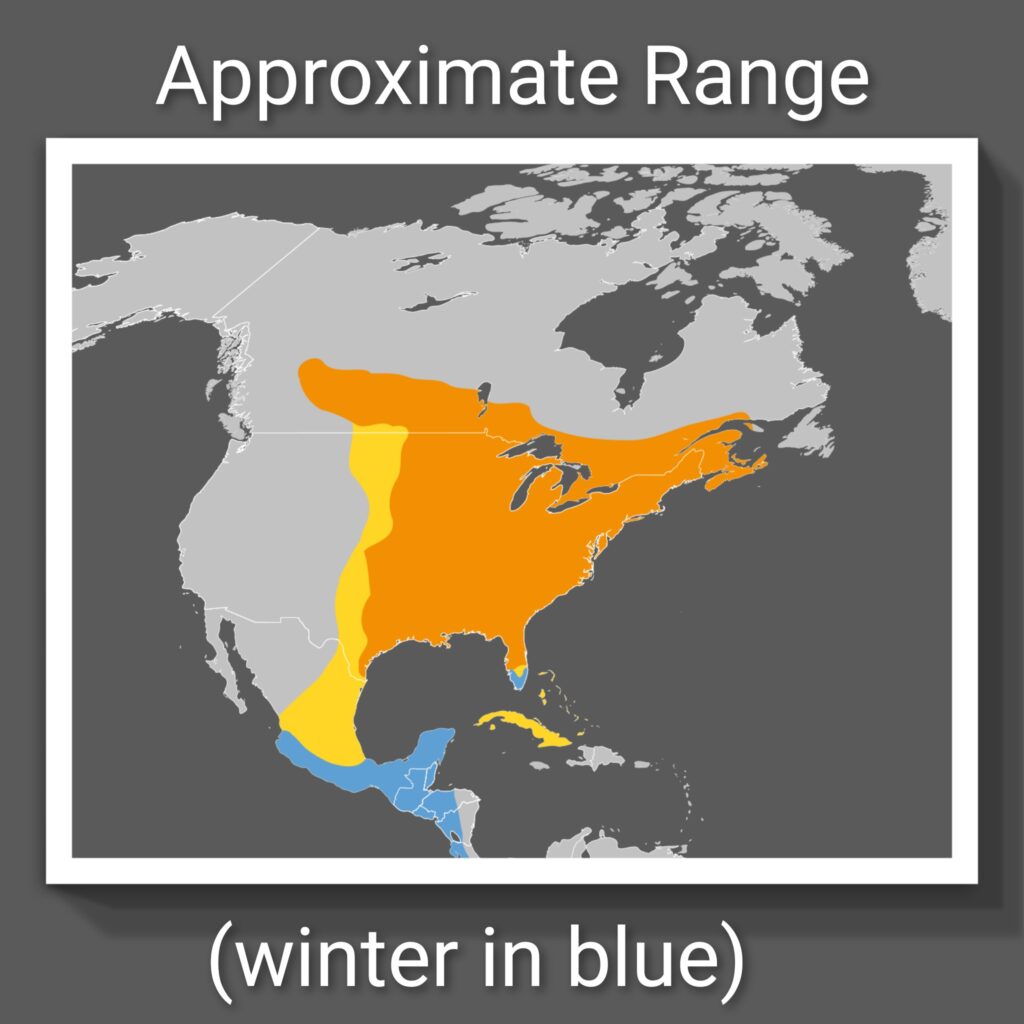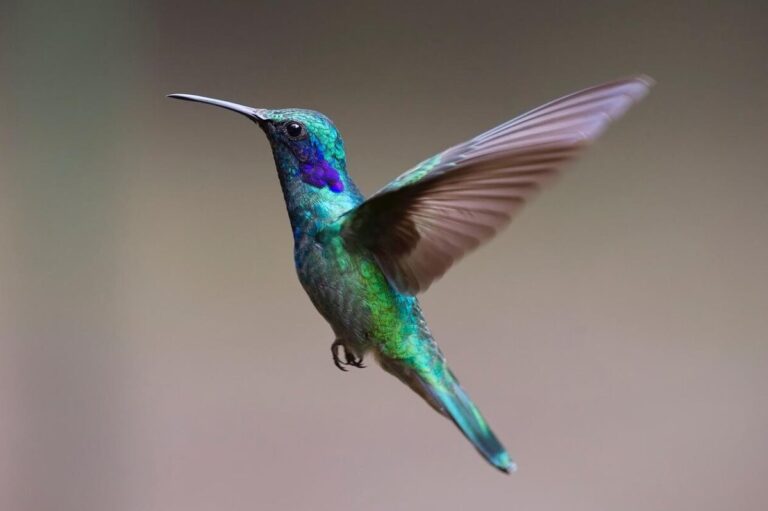A Closer Look at the “Jewel of the Skies”
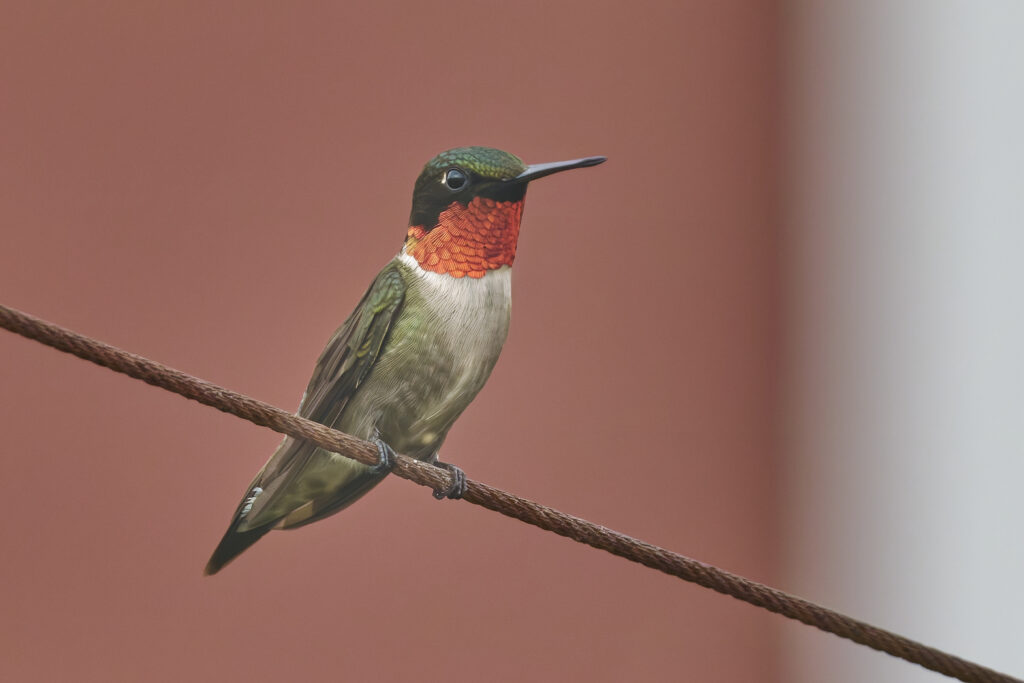
Photograph By Paul Danese – Own work, CC BY-SA 4.0,
https://commons.wikimedia.org/w/index.php?curid=150398496
In the ever-enchanting avian world, the ruby-throated hummingbird reigns as a miniature marvel that seems to capture the hearts of all who behold it. With its vibrant colors and astonishing speed, this tiny gem of the eastern regions of North America dazzles those privileged with witnessing its fleeting presence. Let’s take a closer look.
Geographic Range & Habitat
The ruby-throated hummingbird (Archilochus colubris) is primarily found in the eastern regions of North America, spanning from Canada down to Central America. During the breeding season, these remarkable birds can be spotted in the eastern and central United States, as well as parts of southern Canada. They typically spend their winters in Central America and southern Mexico.
These tiny birds can be found in a diverse range of habitats, including forests, woodlands, meadows and gardens. They are often found in areas with an abundance of flowers and nectar-producing plants to sustain their high energy needs.
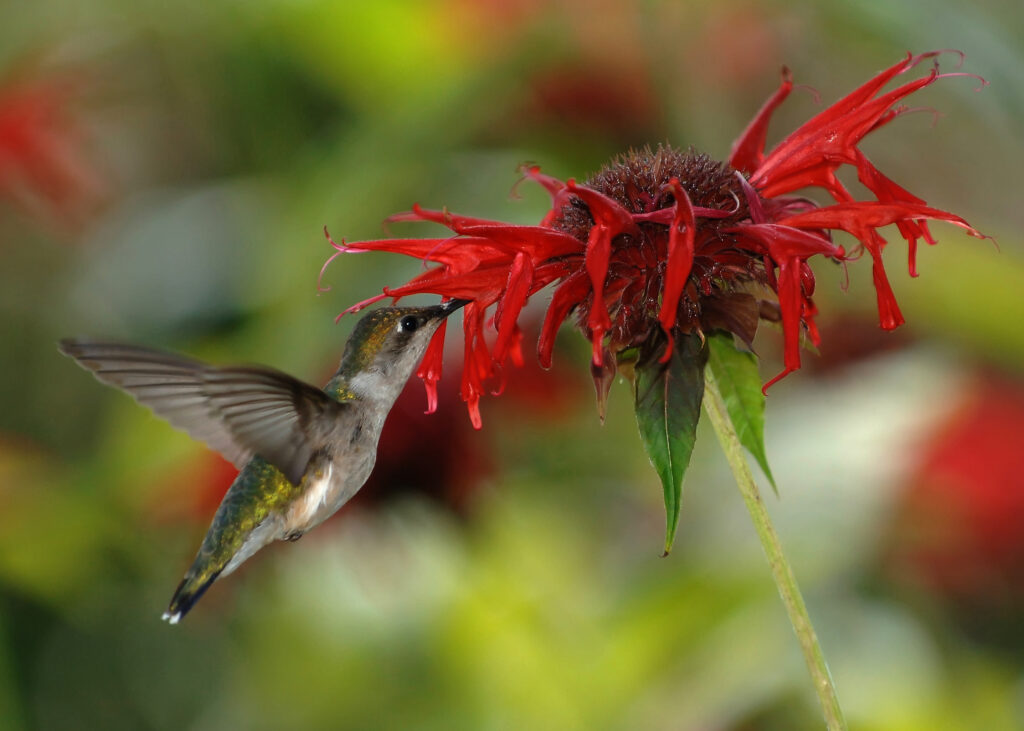
Image By Joe Schneid, Louisville, Kentucky – Own work, CC BY 3.0,
https://commons.wikimedia.org/w/index.php?curid=6691558
Diet
The primary source of nourishment for ruby-throated hummingbirds is nectar from flowers, which provides the essential sugars they need for energy. Some of their favorites are: beebalm, salvia, trumpet vine, cardinal flower and coral honeysuckle.
They will also consume insects and spiders to supplement their diet with essential proteins and other nutrients.
Size and Appearance
Measuring around 3 to 3.5 inches in length and weighing just 3-6 ounces, the ruby-throated hummingbird is one of the smallest bird species in North America. The males boast a brilliant ruby-red throat patch, while the females have a more subdued white throat. Females tend to be slightly larger than males.
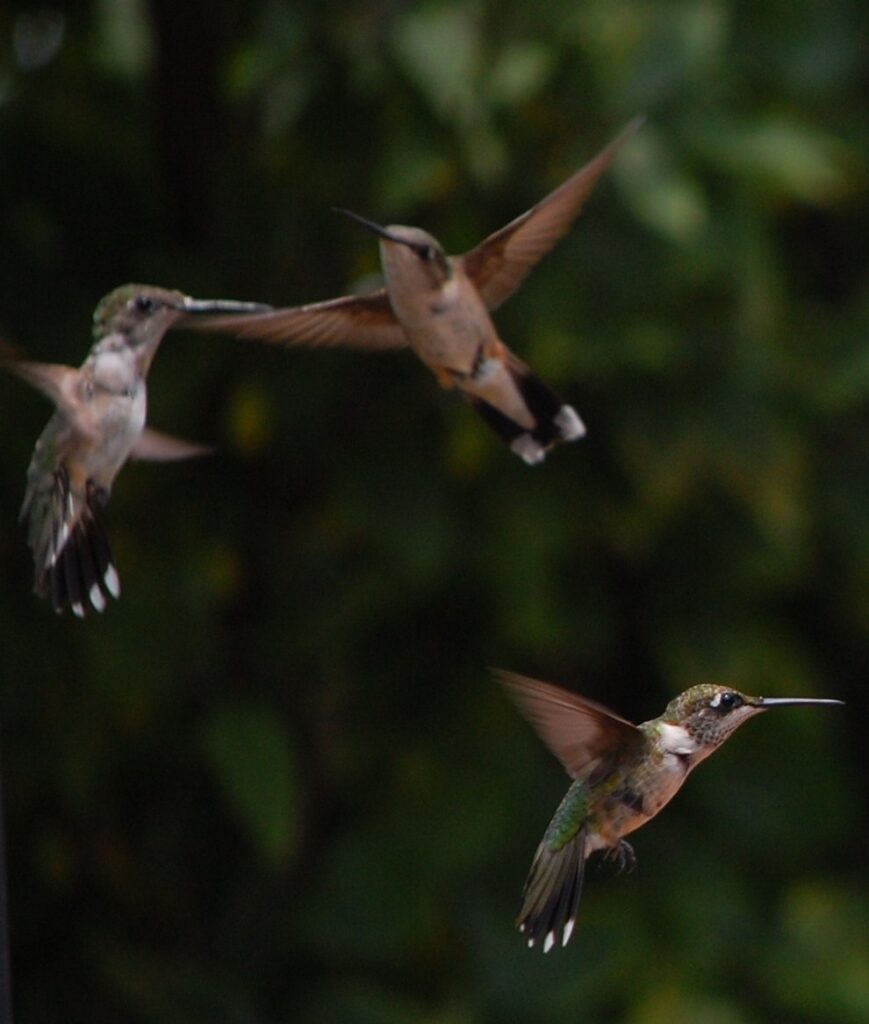
Image By jeffreyw – Uploaded by Fæ, CC BY 2.0,
https://commons.wikimedia.org/w/index.php?curid=23096468
Migration
One of the most remarkable things about the ruby-throated hummingbird is its annual migration. These tiny birds embark on a grueling journey across the Gulf of Mexico, covering up to 500 miles in one non-stop flight. They rely on nectar-rich flowers to fuel their energy for this tremendous journey. Their epic journeys across vast distances are a testament to their remarkable stamina and determination.
Mating, Nesting and Breeding Habits
In the intricate dance of courtship and nesting, the ruby-throated hummingbird puts on a captivating display of devotion and care. The males engage in dazzling aerial displays to win the favor of females, replete with fluttering wings and vibrant colors.
Once a female selects her mate, she meticulously constructs a delicate nest using plant fibers, downy material and spider silk, creating a safe haven for her precious eggs. Incubating the eggs for about 14 to 16 days, the female diligently tends to her offspring, ensuring their survival through the critical early stages of life. As the young hatchlings emerge, the doting mother continues to nurture and protect them until they are ready to venture out into the world.
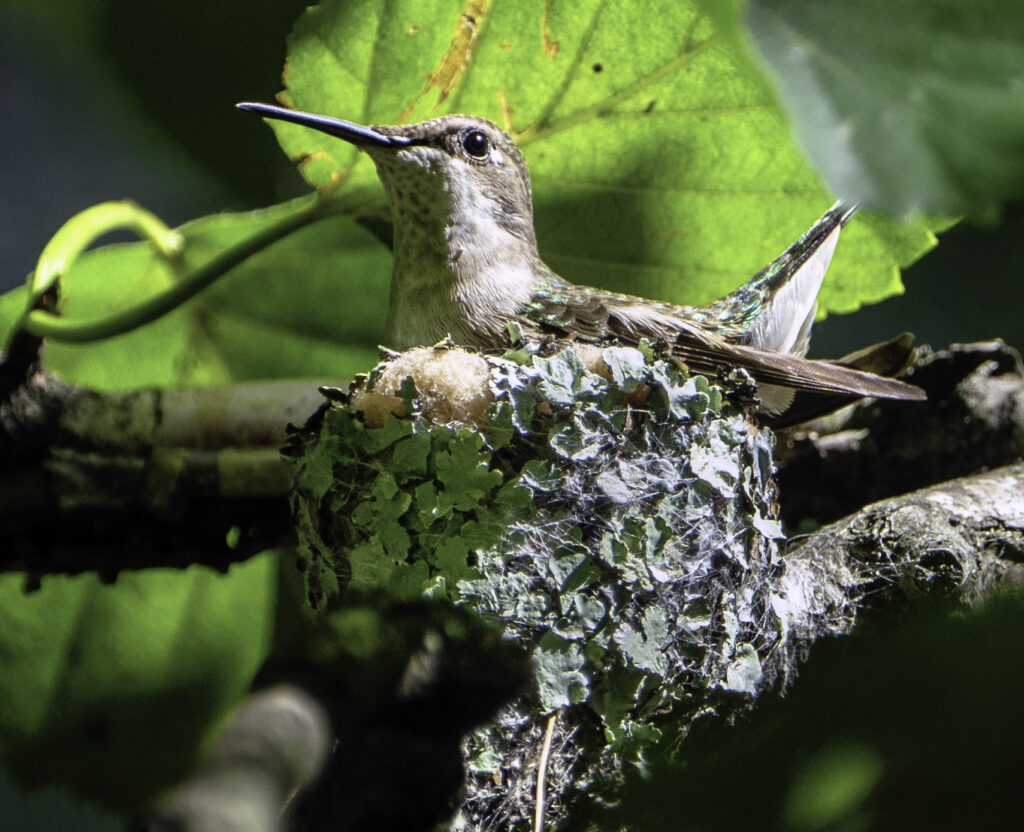
Image By Lorie Shaull – Own work, CC BY-SA 4.0,
https://commons.wikimedia.org/w/index.php?curid=92782301
* * * * * * * * * * * * * * * * * * *
So there you have it. The ruby-throated hummingbird is a true marvel of nature, with its stunning colors, remarkable speed and awesome feats of migration. From the woodlands of Canada to the lush gardens of Central America, this tiny avian treasure flits gracefully, a beacon of beauty and grace amidst the verdant tapestry of its diverse habitats. Its buzzing wings and delicate chatter serve as a reminder of nature’s delicate wonders, inviting all to marvel at the intricacies of its existence.
By Steven Roberts

